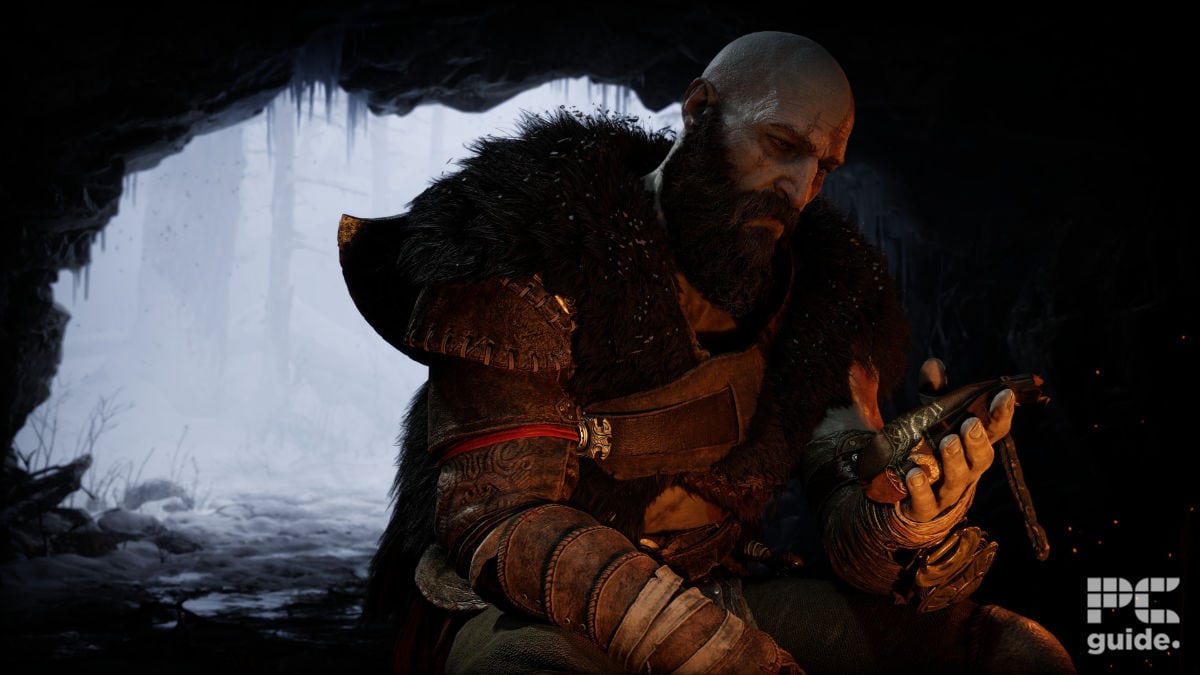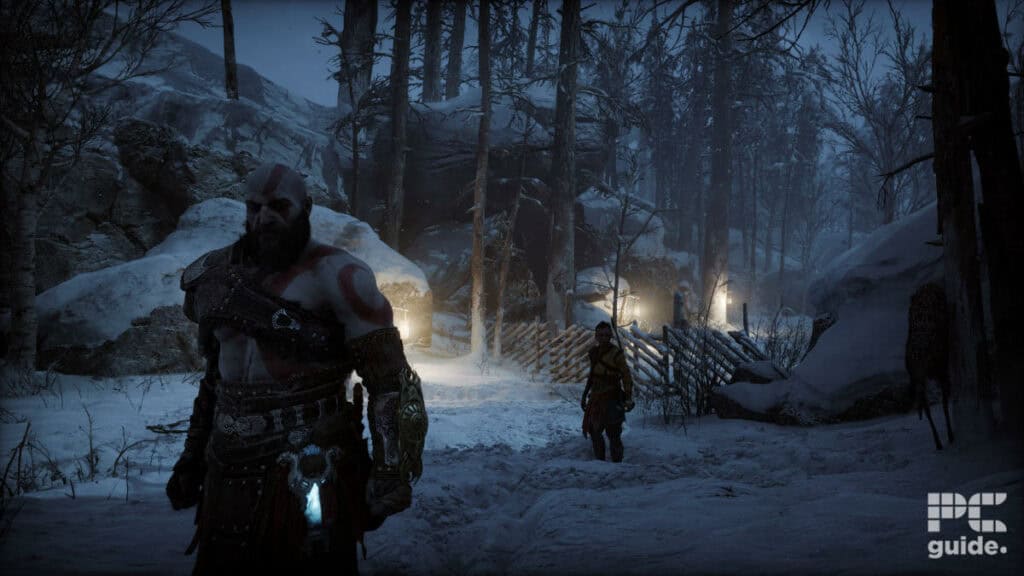Our graphics settings guide for God of War Ragnarok on PC

Table of Contents
At last, the sequel to the popular Sony game is coming to desktops, leaving the shackles of the PS5. With that comes the system requirements for God of War Ragnarok, and there’s quite a range of hardware and settings that come with that release. Leading you to maybe want to alter your settings a bit to improve your gameplay experience. In that case, we list our findings for the best settings to get the optimal quality and framerate for your setup.
With now being available on gaming PCs, there’s quite a bit more adjusting and options to do and go through. Plus with such a variety of requirements, that might make it a bit harder to run through. So we put the game through our testing lab to see how well it performs and find the best selection for ours and yours.
How we picked the best graphics settings for GOW Ragnarok
When looking for the best GPU for God of War Ragnarok, the RTX 4070 Super is a strong contender for the job. Providing that nice combination of performance and price. But if are after something for the highest end and settings the RTX 4080 Super is the best choice. But to test out the graphics and performance we used the RTX 3090 to run the game and at 4k to find the settings suited for that. Then try it out for lower options for when your hardware might need a bit of a boost.
Our testing setup
- Motherboard: ASUS ProArt X670E-CREATOR WIFI
- CPU: AMD Ryzen 9 7950X
- GPU: MSI Gaming X Trio RTX 3090
- RAM: Corsair Vengeance 32GB 6400
- Cooler: ROG Ryujin II 360 AIO
- PSU: Phanteks 1000W

General video settings
At the top of the graphic and camera settings, you can find the general-purpose and display-specific options to set. These will be dependent on your monitor and your preferences. Below we’ll list the ones we used and what you should go for that stayed the same across the board.
| Adapater | Your graphics card (RTX 4090 for us) |
| Monitor | The monitor you want to play on (1) |
| Display mode | Fullscreen (for full performance) |
| Resolution | Native (4K for us) |
| VSync | Off (Uncapps framerate) |
| Aspect Ratio | Auto (adjust if needed to fit you monitor) |
| Frame Rate Limit | Off |
| Latency Reduction | Off |
| Film Grain | Preference (ours is 0) |
| Motion Blur | Preference (ours is 0) |
Best settings for our high-end RTX 3090 PC – 4K 60FPS
When it comes to running the game at the top end, it does take some bit of kit. Sony recommends an RTX 4070 Ti for the job, and our 3090 gets the job done. Capable of running 4k at 60 FPS if you have the hardware you don’t have to skimp out on the settings. This allows you to enjoy high fidelity but without a great framerate.
For that, you can just set things to ultra and forget about it. We also don’t need to use any upscaling or frame-generation to do any of the work, sticking to standard TAA/DLAA. But you can always chuck one of those in if you don’t want to drop the settings at all.
| Frame Gen | Off |
| Method | Temporal Anti-Aliasing |
| Quality | Native |
| Preset | Ultra |
| Textures | Ultra |
| Models | Ultra |
| Anisotropic Filter | Ultra |
| Lighting | Ultra |
| Shadows | Ultra |
| Atmospherics | Ultra |
| Ambient Occlusion | Ultra |
| Tessellation | Ultra |

Best settings for a mid-range PC
Now if you’ve got Something locker to an RTX 3070 with a 1440p monitor targeting 60FPS as well, then you can go for a more mid-range settings choice. Or if you’re just wanting a higher framerate at higher settings then this can be the option you go for instead.
This does include turning on upscaling a notch to take some of the heavy lifting and improve your framerate. That’s where you can use either DLSS/FSR/XeSS on quality mode to get a drop in render resolution upscaled up to your monitors. But be aware the lower your monitor resolution (i.e. 1080p) the more drastic the drop in quality.
| Frame Gen | Off |
| Method | DLSS/FSR |
| Quality | Quality |
| Preset | High |
| Textures | High |
| Models | High |
| Anisotropic Filter | High |
| Lighting | High |
| Shadows | High |
| Atmospherics | High |
| Ambient Occlusion | High |
| Tessellation | High |

Best settings for a low-end PC
Lastly, if you’re a bit on the lower end of hardware, something on the minimum/recommended requirements with a GTX 1060/RTX 2060 then you may prefer these low-end settings. Going for a 1080p monitor with 30/60 FPS or getting the highest framerate rather than going for fidelity.
This uses AMD FSR-FG frame generation to add in the extra frames extrapolated from the previous and next. Along with using DLSS or FSR on balanced/quality depending on how many effects on the look you want it to have. In that case, going for medium as well is a good option to go for.
| Frame Gen | AMD FSR-FG |
| Method | DLSS/FSR |
| Quality | Balanced |
| Preset | Medium |
| Textures | Medium |
| Models | Medium |
| Anisotropic Filter | Medium |
| Lighting | Medium |
| Shadows | Medium |
| Atmospherics | Medium |
| Ambient Occlusion | Medium |
| Tessellation | Medium |

How to optimize and increase God of War Ragnarok’s FPS
There are quite a few things you can try and do to optimize your game and performance. There is always the use of DLSS 3 and FSR as general upscaling that can give you an easy boost, but you may not always want to sully the quality. In which case here are some other considerations about the rest of your PC if you want to improve how things are playing out.
- Limit CPU and GPU utilization elsewhere. Checking your PC usage you can see if there’s any other program or service taking up precious resources away from the game. You may want to close those and stop them from taking up valuable power from the game itself and slowing down its performance.
- Make sure your drivers are up to date, particularly your graphics. As these can contain optimizations and improvements for games, in particular those newer ones, you want to ensure you are up to date on them so you can fix some crashing and issues in them. So if you are looking to update your AMD, Nvidia, or even Intel graphics card you can do so through these links.
- You may also want to enable the likes of V-Sync if you’re experiencing screen tearing and stuttering. This will cap the game framerate to your monitor refresh rate making it deliver frames at the right time to keep the look in check. It would be better to use Freesync or G-Sync but does require your monitor to support these variable refresh rate features to improve the experience.
Final word
Hopefully now with our guide to the graphics settings, you can get the best experience from it. Or at least you’ll have an understanding of how to best rectify any slower performance you might experience and problems you encounter. With the wide variety of options to pick from, there’s plenty to consider but with the system requirements, it’s no surprise there’s plenty to consider.
There are a lot of helpful additions to boost the performance the game can achieve. With upscaling and frame generation being the saving grace to older systems. You may also decide on picking the best laptop for God of War as well if you’re not sure you have what it takes to run it outright.